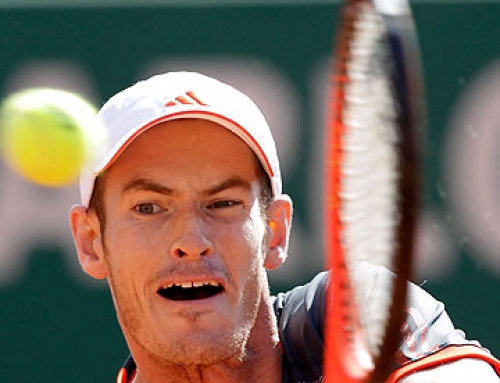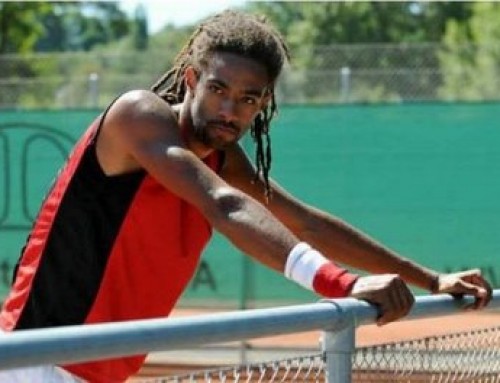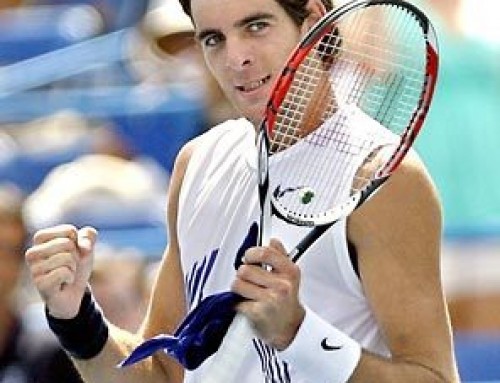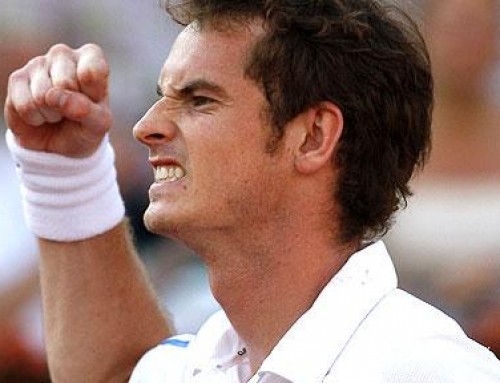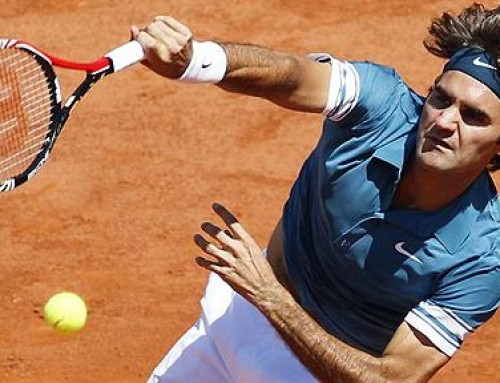 Perhaps no other sport has experienced the kinds of changes that tennis has in the last 30-40 years. If someone were to have taken a time machine from the 1970s and modern day, they’d see a sport that follows the same rules as the one they knew, but the play would be completely foreign.
Perhaps no other sport has experienced the kinds of changes that tennis has in the last 30-40 years. If someone were to have taken a time machine from the 1970s and modern day, they’d see a sport that follows the same rules as the one they knew, but the play would be completely foreign.
Let’s take time to reflect on those changes by first looking back at how tennis was played in the 1970s and earlier.
Because grass dominated the Grand Slams–three of four majors were played on the surface, and because grass courts would get torn up after use, leading to bad bounces, the solution many players opted for was serve and volley. Avoid bad bounces by avoiding bounces.
There were two major styles of play/grips: the Australian style and the American style. The Aussies preferred a “one grip fits all” philosophy. They stripped tennis to its bare essentials. If you had to use one grip for everything, it pretty much had to be a continental grip. Continental grips are used for serves and volleys, and are reasonably good for backhands. The one weak area is the forehand. It’s not surprising that Australians did not have consistent forehands.
Part of this philosophy of getting to net was the slice approached shot. Indeed, forehands were generally hit flat or with a little underspin or sidespin for safety. Since it’s hard to hit dipping passing shots this way, the lob was an extremely common tool, therefore, a good overhead was a necessity to play serve-and-volley.
Americans, by contrast, used three grips: Eastern forehand for the forehand grip, Continental for serve and volley, and Eastern backhand for the backhand grip. Again, much like the Australians, Americans also preferred serve and volley tennis.
Harry Hopman provided one of the earliest “innovations” of tennis. He believed in rigorous practice, and wanted practice to be harder than real play. He preached fitness. Given the gentlemanly nature of the sport, this injection of athleticism lead to players who could play as well in the fifth set as they did in the first.
Although grass dominated the game, Europeans still played on clay, and there were still clay court specialists, many who hit with topspin, although topspin was considered something of a novelty. Topspin was one of the few innovations adopted by Rod Laver and may explain why he was so successful.
Topspin’s popularity grew with two top players in the 1970s, even though many players were already using topspin. Bjorn Borg showed that you could hit heavy topspin and still win on the fast lawns at Wimbledon. Ivan Lendl then took this another step showing that you could hit the ball much harder than players dared hit it, and the ball would still go in consistently. Lendl was the father of modern power tennis.
The 1970s was a pivotal decade for tennis in a wide number of ways.
Two-handed backhand. Although players like Cliff Drysdale used a two-handed backhand before it was popular, the real success of two-handed backhands came in the 1970s with three number 1 players: Bjorn Borg, Jimmy Connors, and Chris Evert. Although one-handed backhands were commonly taught, their success lead to a huge transformation of the game.
Indeed, experts at the time would be flabbergasted to realize that one-handed backhands would be a novelty, and two-handed backhands would dominate the game.
The two-handed backhand would lead to players that hit as well off the backhand as they did off the forehand. Indeed, classic players like Connors and Evert generally had much better backhands than forehands.
Oversized racquets. Perhaps the biggest splash came from Pam Shriver, long time doubles partner of Martina Navratilova. She made the finals as a 16 year old amateur in 1978 US Open using an oversized Prince racquet. In those days, racquets were not even 70 square inches. The Prince racquet was nearly twice the area, at 110 square inches.
Oversized racquets combined with another technology that forever changed the way the game was played.
Non-wood racquets. By the 1960s, racquets were starting to be created from material other than wood. Wood had several disadvantages. For one, it was pretty heavy. For another, being wood, it warped if the humidity was too high. Wood presses were made to prevent warping.
Although steel racquets existed before the late 1960s, the inventive mind of Rene Lacoste, the founding member of the French Four Musketeers, created the T-2000. Its unique design, perhaps the most innovative looking racquet ever, used a steel wire wrapped around another steel wire. It was Jimmy Connors racquet of choice throughout the 1970s.
1975 turned out not only to be a pivotal year at Wimbledon where Arthur Ashe upset the brash Jimmy Connors (and beat Bjorn Borg en route), it was also a final between two players that used non-wood racquets. Connors played with steel. Ashe with a composite. Composite racquets were often a mix of graphite and fiberglass. Head created many of these alternate material racquets from aluminum to composite.
The huge revolution in racquets occurred sometime between 1982 and 1983 when pros began abandoning wood racquets in droves. Graphite racquets were not only stronger than wood, they were lighter than wood, and they didn’t warp. This meant you could create racquets much larger than wood and much lighter too. In the old days, a racquet might be 12 ounces or heavier. Today, there are racquets that weigh in at 9 ounces or even less.
This lead to an increase in size of racquets. Most pros in the 1980s learned to play on wood. The change to an oversized racquet would have meant too much power to control. So most players only took modest increases in racquets sizes, typically in the low 80 sq. in range. McEnroe switched to graphite. Lendl was already using graphite. Wilander used graphite. Vilas mostly stayed with wood and was on the verge of retiring. Borg quit before the graphite revolution was complete.
The early 80s produced a mix of players. There were players like Wilander and Lendl that lead the topspin brigade. There were more classic players like McEnroe, Connors, Tim Mayotte, etc. that hit with little topspin or that still served and volleyed. But as time passed, the power tennis game was becoming more important. Boris “Boom Boom” Becker was the next step in power tennis. He competed with perhaps the last classicist of the day, Stefan Edberg, showing both styles were still effective.
Then, the Bollettieri academy kids surged forward. The first of these actually showed up in the early 1980s with Jimmy Arias, then Aaron Krickstein. They had several Bollettieri qualities. Huge forehands, deficient net games. But the Bollettieri academy finally lead to its ultimate player in Andre Agassi. When Agassi burst on the tour, even Lendl, the hardest (or second hardest, if you add Becker to the mix) hitter on the tour was amazed at Agassi’s power.
With Agassi came a bunch of similar players: Jim Courier, Michael Chang, Todd Martin, and Pete Sampras. All had big forehands. Many had two-handed backhands.
Inside out forehand. If you were to show an inside-out forehand to a player that played in the 1960s, they might laugh at the idea. Why would you give up so much space to hit a forehand? In that day, groundstrokes were merely a means to an end. Get to net. Thus, most forehands were not being used to hit punishing winners. No one thought that was possible, and so it wasn’t done.
But once the power forehand became in vogue, why not use it more? Lendl was perhaps the player that used the inside-out forehand and brought it to popularity. Again, this was made possible by hitting with power and topspin. Players like Agassi and Sampras would favor their forehands by cheating to their left.
Reverse forehand. Pete Sampras pushed the game forward as well. Although he is noted for his huge serve, the serve that won him 7 Wimbledons, Sampras is less renowned for a stroke that has become hugely important today: the reverse forehand, formerly known as the buggy-whip forehand.
One reason Agassi had so much trouble beating Sampras, other than his huge serve, was that Sampras was a decent enough baseliner. Agassi would try to hit Sampras off the court. A typical strategy was to hit a hard crosscourt shot. Sampras would track this down, and use his reverse forehand to create an even sharper angle, with pace, and Agassi would be flummoxed. How did Sampras do that?
Rafael Nadal has taken the idea of a reverse forehand to an extreme where he hits a large number of his forehands in this style. It allows him to barely get to a shot, and still hit a powerful accurate shot.
Modern passing shot. The reverse forehand also became a staple of the modern passing shot. In the old days, hitting a flat passing shots was fraught with risk. How do you control the ball accurately? A passing shot was either hit sharp crosscourt, or hit deep up the line. With the advent of topspin and the reverse forehand, you could hit a short down the line passing shot with tons of power, or a sharp crosscourt as before, dipping wildly.
A volleyer as talented as Federer will come to net and not even be able to touch a passing shot. This is how good passing shots have become. Indeed, it’s so good, that you rarely see lobs, though that has made a small comeback. Look at players from the 1970s or earlier and you’ll see the lob is a staple of the passing game.
Standing back. Professional courts have always had a lot of space behind the baseline. Most players generally stood close to the baseline. However, Borg did something unusual. He would often play many feet behind the baseline, and receive serve way, way back. Lendl would do the same. In the old days, if you stood that far back, you would have to hit an extra 10 feet, and that would weaken your return.
Players, especially defensive players, learned to play 6-8 feet or more behind the baseline, but because they hit so hard, they could still hit winners that far back. Andy Murray has been criticized for being too passive. Part of his passive nature is standing 8-10 feet behind the baseline.
Fitness and movement. Lendl not only pushed the game forward by hitting power forehands, inside out forehands, etc. He also took training and diet to a new level. Both he and Martina Navratilova worked hard at off-court practice, building strength, endurance, etc. to find any additional edge they could. Lendl routinely invited young players, like Pete Sampras, to hit with him so he could play upcoming talent, a practice that Roger Federer also uses today.
Once the game got faster with sharper angles afforded by reverse forehands, players realized they needed to chase these shots down if they were going to win. This meant an emphasis on movement and recovery and balance. This also meant a commitment to weight training so the body wouldn’t break down due to these fast changes in direction.
Watch a match on clay from the 1970s. When winners are rare, and no one serves and volleys, conservative play is king. This means a lot of hitting, but not a tremendous amount of running. With today’s power game, a shot can be hit anywhere on the court, and players have to run really fast and hard, and still hit a huge shot when they get there. In the past, any such running meant a defensive lob would be tossed up.
Windshield-wiper forehand. In the good old days, a forehand was hit with a high follow-through. Even Pete Sampras did this. Agassi may have been the first to follow through to the left of his body and use a 180 degree core rotation. What was a novelty in the 1990s became staple in the 2000s. Now every player rotates 180 degrees, from Federer, to Murray, to Djokovic. Nadal is something of an exception mostly because he hits so many reverse forehands.
This style of hitting leads to power and topspin.
Squash shot forehand. The defensive lob was huge in its day. You were in trouble, you hit a defensive lob. A lob typically lead to an overhead, and usually, point over. Today, the squash shot forehand is the solution to a huge shot hit to the forehand. It’s an emergency slice that every modern player needs to know how to hit, and even in an emergency, it must land deep, so players can have time to recover, and not put themselves in danger of a huge shot afterwards.
Recovery slice backhand. Once upon a time, the slice backhand was used to approach the net, and was more of an offensive shot. Ken Rosewall used this as a staple of his game. These days, the slice backhand is used more to recover. It is not meant to hit winners, but to float very deep and provide recovery time as well as a change of pace. The technique is even different. There is a sharp chop downwards, partly to address the high topspin shots that are frequently being hit.
Swinging volley. Lendl’s innovations continue here as well. Given his huge topspin forehand and his so-so volley, Lendl often takes floating forehand volleys as in-the-air swinging forehand volleys. Players like Agassi and Federer have used this as well.
Serving percentage. This is one of those things that’s crept up on people. If you check the statistics of the 1980s, it was pretty common for servers to serve under 60%. Lendl routinely served around 50% first serves. These days, the best servers are averaging 70%. Andy Roddick, with one of the biggest serves in the game, average a little above 70% first serves. Ivo Karlovic also averages this high. Roger Federer typically serves around 65%.
Despite the serving percentage increase, players are returning better than ever, so free points aren’t that much easier to come by.
Kick serve. Kick serves have been around for a while, but it has now become the staple second serve. The slice serve is seen far less, though it is still used. The top pros all kick it extremely high.
Drop shots and drop volleys. Now that players stand way back behind the baseline, they have suddenly become vulnerable to the drop shot and drop volley. In the 1980s, this shot was rarely seen and often poorly hit. These days, the top players have all added these two shots to their arsenal. Touch players haven’t made a resurgence, but these touch plays have come back to deal with the problems that power tennis poses to modern players.
Conclusion. With the change in equipment and racquet material, players have changed their hitting style, and with each change has come responses to deal with those changes. It will be interesting to see where things go in the next decade.



